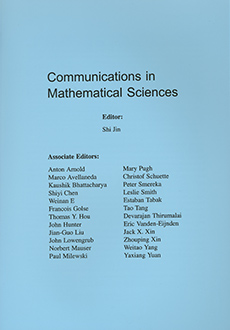Abstract
An orthogonal discrete auditory transform (ODAT) from sound signal to spectrum is constructed by combining the auditory spreading matrix of Schroeder et. al. and the time one map of a discrete nonlocal Schrodinger equation. Thanks to the dispersive smoothing property of the Schrodinger evolution, ODAT spectrum is a smoother than that of the discrete Fourier transform (DFT) consistent with human audition. ODAT and DFT are compared in signal denoising tests with spectral thresholding method. The signals are noisy speech segments. ODAT outperforms DFT in signal to noise ratio (SNR) when the noise level is relatively high.
Citation
Yingyong Qi. Jack Xin. "An Orthogonal Discrete Auditory Transform." Commun. Math. Sci. 3 (2) 251 - 259, June 2005.
Information





